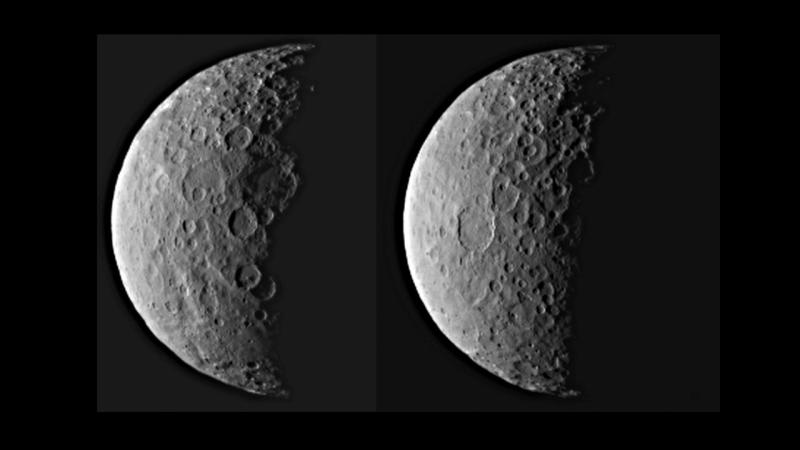NASA Prepares For ‘Dawn’ Spacecraft To Enter Ceres’ Orbit
NASA announced that its Dawn spacecraft is less than a week away from becoming the first to explore a dwarf planet.

Dawn is expected to enter Ceres’ orbit early in the morning on Friday, March 6. The craft will not be in communication with Earth at the time of entry, as it will enter on the dark side of Ceres.
“Every time we visit a new object, we are always surprised,” said Charles Elachi, director of NASA's Jet Propulsion Lab (JPL), where the Dawn mission is headquartered. Elachi said Dawn is one of twenty missions at JPL with the goal of exploring “how our solar system originated and changed over time.”
Ceres is the largest object in the Asteroid Belt between Mars and Jupiter, about three times farther from the sun than Earth. Following its discovery in 1801, it was classified as a planet, then an asteroid, and is now considered a dwarf planet.
“At 600 miles across, it’s the giant of the Asteroid Belt,” said Robert Mase, the Dawn mission’s project manager. “It’s one of the last unexplored worlds in our solar system.”
Dawn will be the first to enter the orbits of two separate objects in space on a single mission. In 2011, Dawn orbited the asteroid Vesta, the second largest object in the Asteroid Belt. This extraordinary travel is made possible by ion propulsion. Dawn is only the second spacecraft to use it in interplanetary travel.
“Ion propulsion as a concept has been around for decades,” Mase said, giving a nod to the late Leonard Nimoy. “It was Mr. Spock who pointed out the alien ship with the ion propulsion technology that was far more advanced than anything they had on the Enterprise.”
SEE ALSO: Remember This Scene: In Memory of Leonard Nimoy
The new “hyperefficient” engine ionizes and accelerates xenon gas atoms, which then exit the spacecraft at extremely high speeds. The ions exert very little thrust – “about as much as this piece of paper against my hand,” Mase said, holding a piece of paper on his fingertips. “It goes zero to sixty in about four days.”
Despite the slow acceleration, the process is ten times more efficient than chemical propulsion and can continue to propel a spacecraft for years. The Dawn launched seven and a half years ago, and has one more scheduled year of its mission.
University of Southern California’s Prof. Joseph Wang worked on ion propulsion research at JPL during Dawn’s design phase and said it’s not only revolutionary because of its efficiency, but because spacecraft can reach very high exit velocities at a low cost – a huge benefit in space travel.
Carol Raymond, Dawn’s deputy principal investigator, said the mission is important because it examines “protoplanets from the dawn of the solar system.” She compared them to fossils and said they can provide insight on what was happening as the solar system was forming.
As for life on Ceres, Raymond said conditions with “biological potential” were present once, but not any longer. She also explained its distinctive features, like smooth, flattened craters and bright spots visible in the latest images sent back as Dawn approaches.
“Suffice it to say these spots were extremely surprising to the team,” Raymond said. She noted that the brightness could be deposits of reflective material such as ice or salt. “The team is really, really excited, because it is unique in the solar system. We will be revealing its true nature as we move closer and closer to the surface. The mystery will be solved.”
Raymond said she was personally very excited about the nearing completion of the mission. “It’s the highlight of my career,” she said after the presentation, visibly excited.
After a successful entrance into orbit around Ceres, Dawn will emerge from the dark side in late April and begin its first orbit. The craft is expected to make four orbits at varying altitudes, sending back data from each trip, and should finish about 235 miles from the surface in December 2015.
Dawn will continue to orbit Ceres for hundreds of years to come, but Mase estimates it will run out of the fuel it uses to orient itself for photography and communications a few months after the primary mission ends in June 2016.
Watch the full announcement here.
Reach Contributor Jenna Pittaway here. Follow her on Twitter here.



